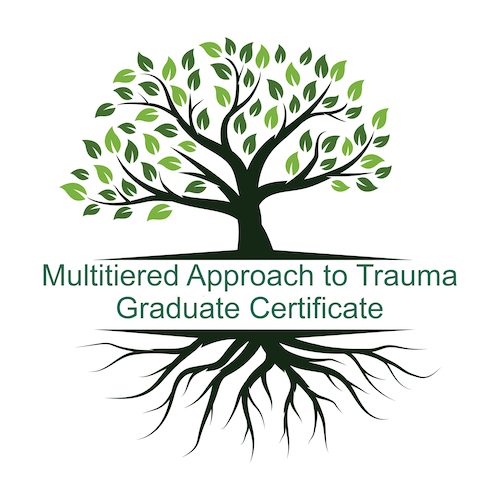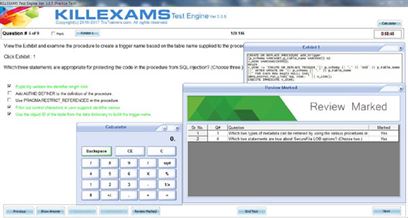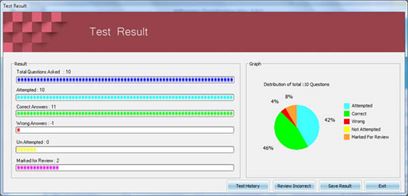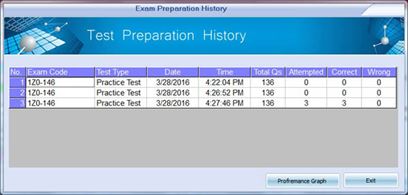As a recognized leader in the tracking and location industry, ETS has been working internationally for nearly 30 years with law enforcement agencies and businesses to address and reduce crime - an ongoing, shared community problem. The cornerstone of ETS' long-term success lies in the formation and execution of the Community Coalition, public/private partnerships supported by ETS that are able to effect far-reaching and measurable results by bringing together law enforcement and local businesses to reduce crime in the communities they serve. With installed Systems providing service to more than 200 cities, Electronic Tracking Systems has been providing them with the ability to track, apprehend, and incarcerate felony offenders, making those communities and neighborhoods safer places to live and to do business.
ESPA Certified Electronic System Technician Exam Braindumps
Killexams.com ESPA-EST Exam Braindumps contain complete question pool, updated in April 2024 including VCE exam simulator that will help you get high marks in the exam. All these ESPA-EST exam questions are verified by killexams certified professionals and backed by 100% money back guarantee.
ESPA-EST approach - ESPA Certified Electronic System Technician Updated: 2024 | |||||||||||||||||||||||||||||||||||||||||||||||||||||||||||||||||||||||||||||
| Review ESPA-EST dumps question before you step through examination | |||||||||||||||||||||||||||||||||||||||||||||||||||||||||||||||||||||||||||||
 |
|||||||||||||||||||||||||||||||||||||||||||||||||||||||||||||||||||||||||||||
|
|||||||||||||||||||||||||||||||||||||||||||||||||||||||||||||||||||||||||||||
|
Exam Code: ESPA-EST ESPA Certified Electronic System Technician approach January 2024 by Killexams.com team | |||||||||||||||||||||||||||||||||||||||||||||||||||||||||||||||||||||||||||||
ESPA-EST ESPA Certified Electronic System Technician Electrical Basics - Construction Methods and Materials - Identify differences between AC and DC - Identify differences between low-voltage and line voltage - Identify the four basic units of measurement used with electricity, and be able to explain how they relate in Ohms Law Tools - Read and identify planning tools, including construction drawings and symbols on - Identify the various types of documentation tools and methods used on a job/project - Identify hand tools and their uses, storage, and maintenance - Identify power tools and their uses, storage, and maintenance - Identify test equipment and their uses, storage, and maintenance - Identify construction methods to promote safety, productivity, and quality on a job/project. - Identify construction materials to promote safety, productivity, and quality on a job/project. Wiring and Installation Practices - Identify wire and cable materials - Identify termination types, pin-out configuration, wire preparation and termination techniques, and connection points on cables and equipment - Identify color code standards for telephony, speakers, data, and video - Identify the use of fasteners, anchors, and back boxes used to mount cable and other - Identify installation techniques and procedures Standards, Codes, and Safety Practices - Identify the concept of industry accepted standards and best practices. - Identify applicable building codes. - Identify applicable safety practices. ESPA has created a curriculum that covers 5 key domains of knowledge that an EST must have in order to be prepared to enter the workforce: • Electrical Basics • Tools • Construction Methods and Materials • Wiring and Installation Practices • Standards, Codes and Safety Practices ESPA Certification is a widely recognized industry credential that signifies that an Electronic Systems Technician (EST) has been properly trained to be effective on the job from day one. The certification also shows that you are serious about a career in the electronics industry, and ready to continue to learn and advance. ESPA Certified-EST is a high-stakes professional industry certification, built according to the highest standards and administered only in a timed, proctored, environment. Employers value the certification and know that those who receive it have the proper entry-level knowledge they require in future employees. | |||||||||||||||||||||||||||||||||||||||||||||||||||||||||||||||||||||||||||||
| ESPA Certified Electronic System Technician ESPA Electronic approach | |||||||||||||||||||||||||||||||||||||||||||||||||||||||||||||||||||||||||||||
Other ESPA examsESPA-EST ESPA Certified Electronic System Technician | |||||||||||||||||||||||||||||||||||||||||||||||||||||||||||||||||||||||||||||
| Simply experience our ESPA-EST Questions answers and sense guaranteed around the ESPA-EST exam. You will pass your ESPA-EST test at High Marks or your money back. We have latest database of ESPA-EST Dumps from actual test to have the capacity to provide you a prep to get ready and pass ESPA-EST test at the first attempt. Our ESPA-EST vce test simulator is best to practice ESPA-EST braindumps. | |||||||||||||||||||||||||||||||||||||||||||||||||||||||||||||||||||||||||||||
| ESPA ESPA-EST ESPA Certified Electronic System Technician https://killexams.com/pass4sure/exam-detail/ESPA-EST Question: 103 Which of the following characteristics of a video image does scaling set? A. Bandwidth B. Resolution C. Color D. Speed Answer: B Scaling sets the resolution of a video image. Key Takeaway: Video scaling is a technique used to convert video signals from one size or resolution to another. It is usually used to upscale a video signal from a low to a higher resolution. Video scaler is primarily a digital device. However, they can be combined with an ADC, or digitizer, and a DAC to support analog inputs and outputs. Question: 104 Which of the following refers to the term that defines the area in a house where everyone receives the same video signal? A. Sector B. Video area C. Theater area D. Zone Answer: D Zone defines the area in a house where everyone receives the same video signal. Key Takeaway: A general practice used for a video source is to divide the room into conceptual equal-sized zones. All points in the zone will receive the same amount of video signal. The location where the equipment is placed should meet the design, accessibility, and usage needs. Question: 105 You are troubleshooting an issue where a customer complains that he views rolling lines or patterns on many television channels. Which of the following could most likely be the issue? A. DC power in the cable. B. Inadequate shielding on coaxial cable. C. AC power interference. D. Insufficient cable bandwidth. Answer: A The most likely issue is that there is DC power in the cable. Key Takeaway: Horizontal rolling bars are caused by DC power getting into the cable system. To fix this issue, you should disconnect the TV from all other components in the system. If the bars disappear, add the other components back in until the bars return. When you find the faulty component, use a DC blocker to eliminate the DC power path to the system. Question: 106 Which of the following types of coaxial cable shielding is used to resist Radio Frequency Interference? A. Dielectric B. Foil C. Wire mesh D. Wire braid Answer: B The coaxial cable shielding that is used to resist Radio Frequency Interference is called a Foil. Key Takeaway: A foil shield is primarily used to deflect RFI from the cable. Foil shields have a thin drain wire that allows the foil to be connected to the outer channel of an F-type or BNC connector. Question: 107 Which of the following is the QoS Priority for streaming multimedia transmissions? A. 5 B. 3 C. 2 D. 4 Answer: D QoS Priority for streaming multimedia transmissions is 4. Key Takeaway: Best effort transmissions have a QoS priority of 0. Background transmissions have a QoS priority of 1. Standard transmissions have a QoS priority of 2. Business critical transmissions have a QoS priority of 3. Streaming multimedia transmissions have a QoS priority of 4. Voice and video transmissions have a QoS priority of 5. Layer 3 network control transmissions have a QoS priority of 6. Layer 2 network control transmissions have a QoS priority of 7. Question: 108 Which of the following does the SIP protocol do when one VoIP caller places a call to another VoIP user? A. Converts the telephone number into the MAC address of the destination phone. B. Converts the telephone number into the IP address of the destination phone. C. Converts the telephone number into the IP address of the source phone. D. Converts the telephone number into the MAC address of the destination phone. Answer: B SIP converts the telephone number into the IP address of the destination phone. Key Takeaway: SIP allows one VoIP caller to place a call to another VoIP user. When a caller dials the phone number of a VoIP-based user, SIP converts the telephone number into the IP address of the destination phone. It then sends an invitation to the destination address. This causes the phone to ring. Question: 109 You have connected the conductors of a wire pair to different pins of a terminator at each end of a cable. Which of the following refers to this condition? A. Reversed pair B. Crossed pair C. Open circuit D. Short circuit Answer: A When you connect the conductors of a wire pair to different pins of a terminator at each end of a cable, it is known as a reversed pair. Key Takeaway: Reversed pair is a condition where two lines in a pair are connected to opposite pins at each end of the cable. It is called a polarity reversal, or tip-and-ring reversal. If there is a reversed pair condition, the signals on the telephone line would not be properly received or transmitted. Question: 110 Which of the following is a commonly used compression technique in analog cameras? A. MPEG B. ACC C. JPEG D. CIF Answer: D CIF is a commonly used compression technique in analog cameras. Key Takeaway: CIF, or Common Intermediate Format, is a format used to standardize the horizontal and vertical resolutions in pixels of YCbCr sequences in video signals. It was first proposed in the H.261 standard. It defines a video sequence with a resolution of 352 � 288 like PAL, a frame-rate of roughly 29.97 frames like NTSC, with color encoding using YCbCr at 4:2:0. For More exams visit https://killexams.com/vendors-exam-list Kill your test at First Attempt....Guaranteed! | |||||||||||||||||||||||||||||||||||||||||||||||||||||||||||||||||||||||||||||
| Author, Country, year of publication |
Design |
Intervention group: IT platform, name of tool |
Control group |
Sample size, setting, agea, Bipolar disorder type I |
Additional information on the intervention group |
Self-monitoring frequency, follow-up |
Blinding of outcome assessor |
Outcome |
Lieberman DZ et al., USA, 2010 [57] |
RCT |
Computer-based, Online self-monitoring using LCMb |
Paper-and-pencil self-monitoring |
48, Outpatient, 37.7 (SD 12.5), 13 % |
Online self-monitoring of mood, medications and other variables |
Daily, 90 days |
NA |
- No difference in CGI-Sc score between the groups |
- Significantly higher number of days rated and with complete data in the electronic self-monitoring group (intervention group) |
Depp CA et al., USA, 2012 [58] |
RCT |
Smartphone-based, Self-monitoring using smartphone |
Paper-and-pencil self-monitoring |
40, Outpatient, 45.1 (SD 13.8), 90.4 % |
Smartphone-based monitoring of momentary mood and related experiences |
Twice/day in fixed time blocks, 12 weeks |
Yes |
- Significantly higher variability of self-monitored mood in the electronic self-monitoring group both within-person and between-persons |
- Significantly higher compliance in paper-and pencil group (control group) |
Todd NJ et al., UK, 2014 [60] |
RCT |
Web-based, Online self-monitoring using 'Living with Bipolar' |
TAU (and waiting list) |
122, Outpatient, 43.44 (SD 11.25), 70 % |
Web-based recovery informed self-management and self-monitoring |
NA, 6 months |
No (self-assessed unblinded by patients) |
- Primary outcome: Significantly higher self-assessed quality of life (QoL.BD-Briefd and WHOQoL-BREFe) in the intervention group |
- Secondary outcome: Significantly higher self-assessed recovery (BRQf), lower symptoms severity (ISSg), and higher social functioning (SASSh) in the intervention group |
Barnes CW et al., Autralia, 2015 [61] |
RCT |
Web-based, Online self-monitoring using 'Recovery Road for Bipolar Disorder' |
Websites on 'healthy lifestyles' (and waiting list) |
233, Outpatients, 39.0 (SD 10.8), 87.6 % |
Web-based psychoeducatio-nal program and self-monitoring |
Weekly, 12 months |
No (self-assessed unblinded by patients) |
- Primary outcome: No significant differences in self-reported time to recurrence (BDI-IIi, ISSg, self-reported hospitalization and Sheehan Disability Scale) between the groups |
Depp CA et al., USA, 2015 [62] |
RCT |
Smartphone-based, Self-monitoring using 'Personalized Real-Time Intervention for Stabilizing Mood (PRISM)' |
Paper-pencil self-monitoring |
82, Outpatient, 47.5 (SD 12.8), 87.8 % |
Smartphone-based personal self-management strategies and self-monitoring |
Twice/day in fixed time blocks, 24 weeks |
Yes |
- Primary outcome: Significantly lower MADRSj score at week 6 and 12 in the intervention group. No difference at end of study. |
- Secondary outcome: No significant differences in YMRSk and self-rated functional impairmentl between the groups |
Lauder S et al., Australia, 2015 [63] |
RCT |
Web-based, Online self-monitoring using 'Moodswings' |
Moodswings (online psychoeducation, self-monitoring of mood and discussion boards) |
156, Outpatients, 40.6 (SD 10.6), 51.5 % |
Moodswings plus online Cognitive Behavioral Therapy |
Daily, 12 months |
No (self-assessed unblinded by patients) |
- Primary outcome: Significantly lower ASRMm score in the intervention group. No difference in MADRS Self-assessment and other self-assessed outcomes between the groups. |
Faurholt-Jepsen M et al., Denmark, 2015 [76] |
RCT |
Smartphone-based, self-monitoring using 'MONARCA' |
Placebo smartphone and TAU |
78, Outpatients, 29.3 (SD 8.43), 67.1 % |
Smartphone-based self-monitoring and daily feedback loop to patient and clinicians |
Daily, 6 months |
Yes |
- Primary outcome: No significant difference in HDRS-17n and YMRS between the groups. |
- Sub-analyses: More depressive symptoms in the intervention group. Fewer manic symptoms in the intervention group. |
Systems are often designed using a system block diagram that considers the of a system: How the system will work is the ‘process’ and the For example, a system diagram for a vending machine would be: There are several ways to communicate systems effectively. Below is an example of a block diagram for a radiator: They are a graphical representation of how the electronic circuit has been joined:
Called Digital Home Technology Integrator+ (CEA-CompTIA DHTI+), the certification is in beta mode and is available to integrators free at http://certification.comptia.org/hti/dhti_faq.aspx. Plans call for the certification to officially launch in March. It will cost $180 for CompTIA members and $225 for nonmembers. The certification is designed to provide digital integrators an industry-accepted seal of approval to show their mastery of home integration standards, including networking, audio/video, telephone and VoIP, security and surveillance, home control management, and documentation and troubleshooting, said Miles Jobgen, CompTIA product manager. "The main reason behind this is that the mass market is beginning to adopt advanced technologies in the home. They are beginning to demand integrated home networks," Jobgen said. "It's getting to the point where this technology and products are no longer boutique offerings available only to the upper echelon of society. Some of the technology is relatively easy to install. But once you start adding multiple components to the home network, it becomes too complicated for the average homeowner. They need somebody to help them configure and optimize those solutions." The program shows recognition by CompTIA and CEA, under its Tech Home Division, of the growing need for skilled digital integrators in the home construction and retrofit markets. Industry leaders expect that demand to grow with the upcoming release of Microsoft's Windows Vista operating system, which brings added multimedia muscle. Also fueling demand, they said, are the growing need to receive, store, manage and share music and video files available over broadband connections; the influx of cost-effective home technology solutions, such as IP-based surveillance, control, automation and entertainment; and fully networked computing. CEA, for its part, is taking a tiered approach to certification. While DHTI+ focuses on mass-market integration, CEA's Tech Home Division recently partnered with the Custom Electronic Design and Installation Association (CEDIA) and the National System Contractors Association (NSCA) to launch the Electronic Systems Professional Alliance, which will provide cross-industry certification for the upper end of the custom installation market. The new programs offer training and certification tailored for different types of integrators, but the initiatives are designed to help those professionals gain widespread recognition as a unified "fourth trade" group, along with builders, architects and interior designers in the home market. "There are so many different training platforms, but nothing has gained traction," said Jay McClellan, president of Home Automation Inc. and president of CEA's Tech Home Division. "We want to ground the training on a basic foundation that each group can build its own content on top of. Then we can continually upgrade the programs to further refine what the groups are doing in the market." Although CEDIA offers comprehensive training and certification for high-end installation and integration through its CEDIA University program, it has just begun to add sections on IP-based networking that are aimed more at the mass market. Gerry Lynch, CEO of System Seven, a Topsfield, Mass.-based home integrator, said a trusted certification program in that realm would be useful. "There have been other programs, but I just wish some of them would stick. CompTIA offered HTI+ certification, but I couldn't find anywhere to take the exam," Lynch said. "A lot of companies that offer certification say, 'Take the test with us because you're guaranteed to pass.' But, hey, I actually want my guys to learn something. I want them to know a lot more tomorrow than they know today." PC-related and IP-based networking skills are particularly important in today's home integration environment, Lynch noted. "We need PC skills and things like Apple desktop support skills, but we don't necessarily need to be MCE or Cisco certified," Lynch said. "My guys don't work on corporate networks or hide in the server closet. I have guys hooking up home theaters all day long, and they want to learn more PC home integration skills. They just don't have anyplace to go." DHTI+ courses and exams will be offered by several third-party groups throughout the country, Jobgen said. Online ProgramThe Multi-Tiered Approach to Trauma Graduate Certificate is an online, five-course program designed to prepare you to implement trauma-informed practices and policies within your professional practice. This certificate was designed with busy working professionals and students in mind, offering maximum flexibility to accommodate your demanding schedule. The online curriculum allows students the flexibility to work around their busy schedule, time zone, and professional demands. Did You Know?Trauma is a global public health crisis that has only increased since the COVID-19 pandemic. Adverse childhood experiences, or ACES, refers to specific traumatic experiences a person experiences in childhood. In the United States alone, over 60% of adults surveyed have at least one type of adverse childhood experience before the age of 18 and 1 in 6 adults report having experienced four or more types of ACES (CDC, 2022).
|
ESPA-EST study help | ESPA-EST Free PDF | ESPA-EST availability | ESPA-EST helper | ESPA-EST certification | ESPA-EST book | ESPA-EST techniques | ESPA-EST Topics | ESPA-EST approach | ESPA-EST education | | |||||||||||||||||||||||||||||||||||||||||||||||||||||||||||||||||||||||||||||
Killexams test Simulator Killexams Questions and Answers Killexams Exams List Search Exams |









 History Does Not Define The Future
History Does Not Define The Future This program is for anyone who wants to be an agent of positive change within their professional journey. This program’s innovative design allows student participants to customize their learning to meet their specific professional and learning needs.
This program is for anyone who wants to be an agent of positive change within their professional journey. This program’s innovative design allows student participants to customize their learning to meet their specific professional and learning needs.







